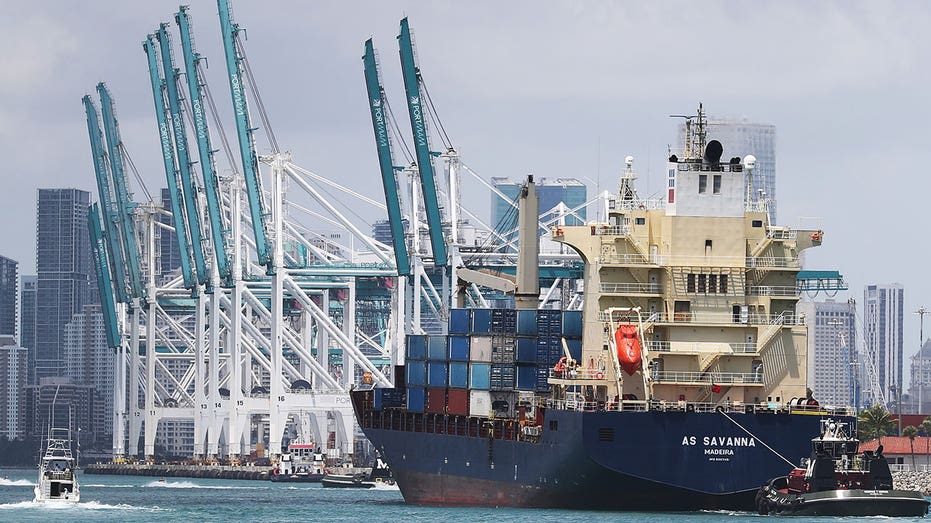

Humans may remain in vital roles as artificial intelligence begins to reshape many industries, but one expert has argued that global supply chain and shipping jobs may become fully automated within the next 20 years.
“Right now, there is documented success in the use of autonomous driving, but when we talk about when and how long [to fully automate]well, now it’s here,” Dr. Larry D. Parker Jr., department chair, supply chain and logistics, at the American Public University System, told Fox News Digital.
“All the industries we’ve mentioned, trucking, air and all the other modes of cargo… right now, there’s documented success in using autonomous driving. But when we say completely [automated]I would say it will probably be in the next 20 years.”
AI has already impacted the manufacturing and shipping industry with integration dating back years before the explosion of attention in newer programs like ChatGPT. AI has already helped improve production times and increase safety in manufacturing plants, leading to “Industry 4.0,” according to Nasdaq.
WALMART USES AI TO NEGOTIATE COSTS, BUY TERMS WITH 2,000 SUPPLIERS SIMULTANEOUSLY
Many companies seem to prefer trying to develop the right machine for a job rather than the right person. With fewer people and more machines, companies can continue to increase profits as they reduce payroll and benefits and other costs associated with human workers.
According to data analyzed by Nasdaq, wages and profits grew at a similar rate between 1964 and 2000, but after that, profits outpaced wages by nearly twice as much.
OPINION: HOW TO DEAL WITH THE AI THREAT? LET THE LAWYERS LOSE
No industry has embraced these technological developments more readily than industries related to the global supply chain. Parker owns a trucking company and explained how even eight years ago, when he first took over, he found the company was integrating AI.
“They were starting some of the planning and testing out west in Arizona,” Parker said. “They were already starting to try these things, so I find it interesting. Now it has gained a lot of notoriety.”
“There’s actually a company that’s using fully automated vehicles right now here in the states and in Canada,” he added, without specifying the company.
One of the most important elements of the current trend to note, according to Parker, is that people have focused on large language models with little attention to computer vision, which focuses on allowing computers and systems can pick out information from visual data. images, videos, and other media, and then act on them.
Computer vision is the most important technology needed to achieve fully autonomous vehicles, and the main stumbling block that will keep humans involved in the process for now.
“The only thing that’s really slowing down [integration] from the technology is fully developing computer vision,” Parker said. “If or when we get beyond that, that’s what makes it so much more effective from a transportation and safety standpoint, because it’s still there are these gaps in the safety maneuvers: snow, fog, those areas of low visibility that a human would do. he has to make a decision about whether to continue or not.
ARTIFICIAL INTELLIGENCE HAS ENTERED THE CONSTRUCTION INDUSTRY AND COULD REVOLUTIONIZE THE $10 BILLION SECTOR
“We should engineer these kinds of things into our computers,” he added, saying he believed machines could one day take full control in these situations as well.
Parker noted that these safety features will remain vital to help keep vehicles automated in the meantime, despite the growing trend and fear that strong AI will lead to the complete elimination of jobs in the near term.
The biggest demand and obstacle may indeed be the human element. Parker suggested that to achieve maximum effectiveness and efficiency for trade routes and automated vehicles, nations will need to share information and data about weather, geography and other elements. Any AI works based on the size and variety of data from which it can learn and develop.
“To prevent an AI from only making half a decision with limited information, it’s going to involve a lot of people who have asset ownership. All these tools, these monitoring systems, satellites,” Parker stressed.
“It really gets, you know, it can be exciting for someone who thinks we’ve slowly built the pieces for this thing over the years. But now you’re going to have to give up some control of it or some part of the information if we, as a society, want to really benefit.”